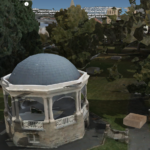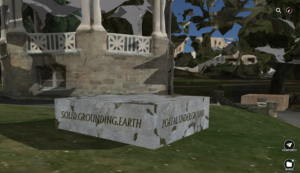Cries from the Anthropocene
How might we respond?
Research theme 2024-2025



The Creative Practice Circle’s research theme for 2024-25 is “Cries from the Anthropocene – How might we respond?”
According to the Macquarie Dictionary, to cry is to “utter inarticulate sounds, esp. of lamentation, grief, or suffering; usu. with tears.” To cry is also “to give forth vocal sounds or characteristic calls, as animals.” A further meaning is “to call out”.
Our new theme follows from previous research themes, “Listening to the Anthropocene” and “Crevice Communities”. The first was a process of tuning in to the human and more-than-human environment; the second, affected by pandemic and lockdowns, examined smallness and extreme locality as a productive space. The Anthropocene, the era in which the planet’s climates and ecosystems are impacted by humans, is here, now, bringing the long-predicted intensification of drought, fire, flood, heatwaves, glacial melting, extinctions and biodiversity loss.
We maintain that the humanities and critical enquiry are more important than ever, both here in Australia and elsewhere in the world. We are interested in interdisciplinary inquiry and collaborations with scientists, artists, activists, people living in regional and remote places and/or other marginalised communities.
Research questions may include:
- How might the arts intersect with the grief and anxiety of living in the Anthropocene?
- What is the role of creative practice as a research methodology for exploring fear and loss?
- What opportunities exist for interdisciplinary engagement between artists, humanities scholars, scientists, activists and environmental experts in engaging with our theme? What opportunities exist for working with diverse cultural communities and Indigenous peoples?
- How can we amplify our voices when it seems that nobody (that is, nobody in power) seems to be responding with a sense of urgency congruent to the known facts of the climate emergency?
- How might we account for and acknowledge the more-than-human world, and/or that of the Unknown Other – those we can’t see or hear because we don’t recognise them?
- The meaning of silence – indifference? disagreement? pain? – can seem mysterious. How do we interpret silence from the human and more-than-human worlds in the face of the Anthropocene?
Part of our inquiry will be to join regional creative practitioners and researchers with science and environment knowledge professionals to imagine and design creative works to engage communities in strengthening sustainable thinking and action on the climate crisis. We are particularly interested in creating works in the digital space, including virtual or augmented reality and accessing and integrating publicly available data into creative works.
Expressions of Interest in participating in a Professional Development Week on this theme are now open.
References
Macquarie University. (1981). The Macquarie Dictionary. Macquarie Library Pty Ltd. St Leonards, NSW. p. 451.
IPCC. (2022). Summary for Policymakers. Cambridge University Press. Retrieved March 18 from https://www.cambridge.org/core/product/31C38E590392F74C7341928B681FF668